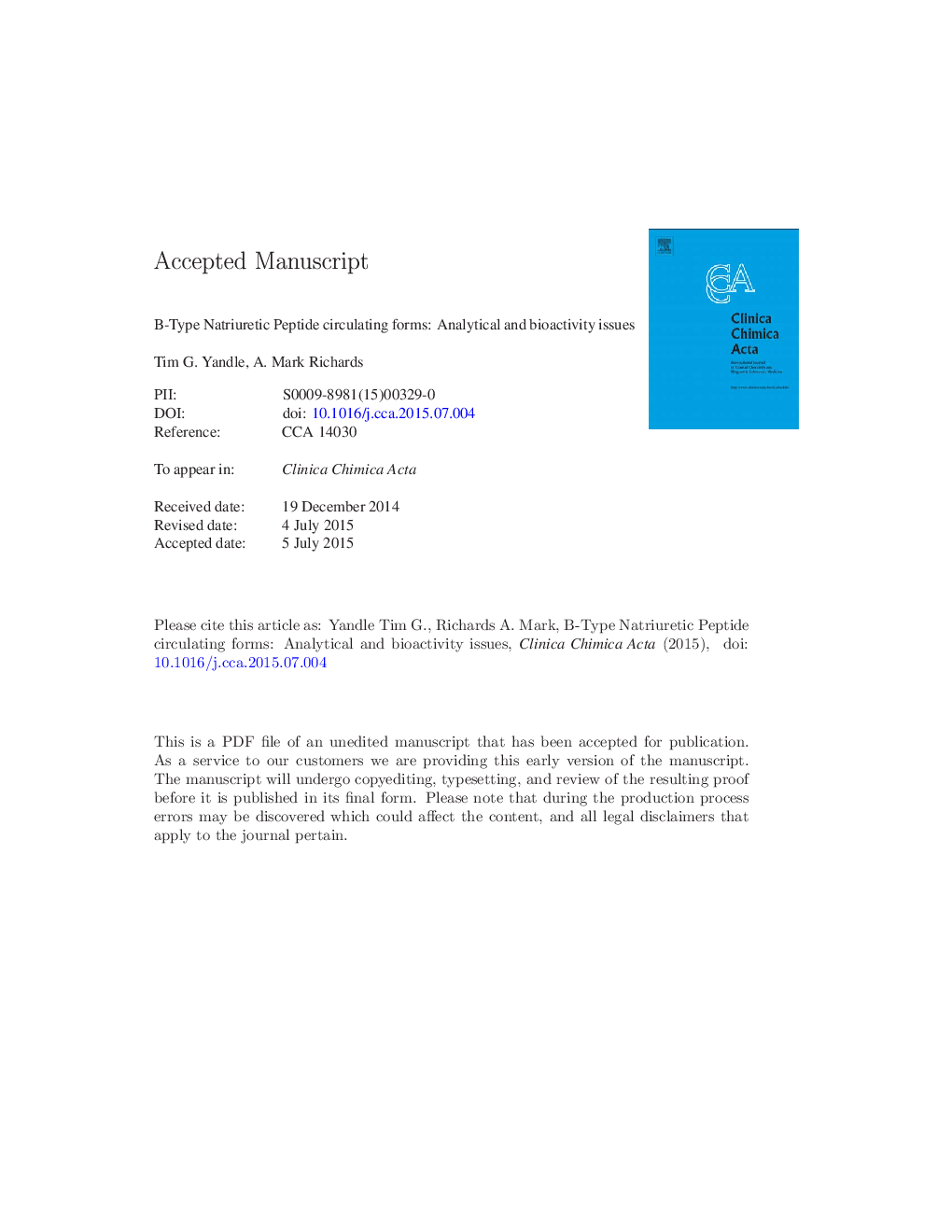| Article ID | Journal | Published Year | Pages | File Type |
|---|---|---|---|---|
| 8310576 | Clinica Chimica Acta | 2015 | 35 Pages |
Abstract
B-type Natriuretic Peptide (BNP), A-type and C-type Natriuretic Peptides (ANP and CNP) comprise a family of peptides that retain a common ring structure and conserved amino acid sequences. All are present in the heart, but only BNP and ANP are regarded as primarily cardiac secretory products. BNP and ANP, acting through a guanylyl cyclase receptor, increase sodium and water excretion by the kidney, induce vasodilation, reduce blood pressure, counteract the bioactivity of the renin-angiotensin-aldosterone and sympathetic nervous systems and possess anti-hypertrophic and anti-fibrotic properties. BNP is synthesised in cardiomyocytes first as the precursor peptide preproBNP. Removal of the signal peptide from preproBNP produces proBNP which is cleaved to produce the biologically active carboxy-terminal BNP peptide and the inactive N-terminal fragment, NT-proBNP. BNP, NT-proBNP, proBNP and the C-terminal portion of the BNP signal peptide have been detected in human plasma as well as multiple sub-forms including truncated forms of BNP and NT-proBNP, as well as variable glycosylation of NT-proBNP and proBNP. The origin of these circulating forms, their potential bioactivity and their detection by current analytical methods are presented in this review.
Keywords
ANPNPR-BNatriuretic peptide receptor BNatriuretic peptide receptor CproBNPNT-proBNPNPR-CNPR-AGIPBNPCNPGLP-1DPP-IVinsulin degrading enzymeIDEdipeptidyl peptidase IVMass spectrometryglucagon-like peptide-1Natriuretic peptideC-type natriuretic peptideTruncationGlycosylationglucose-dependent insulinotropic polypeptideNatriuretic Peptide Receptor A
Related Topics
Life Sciences
Biochemistry, Genetics and Molecular Biology
Biochemistry
Authors
Tim G. Yandle, A. Mark Richards,
